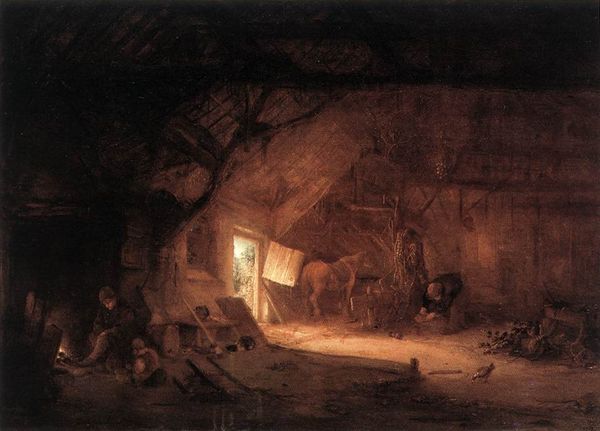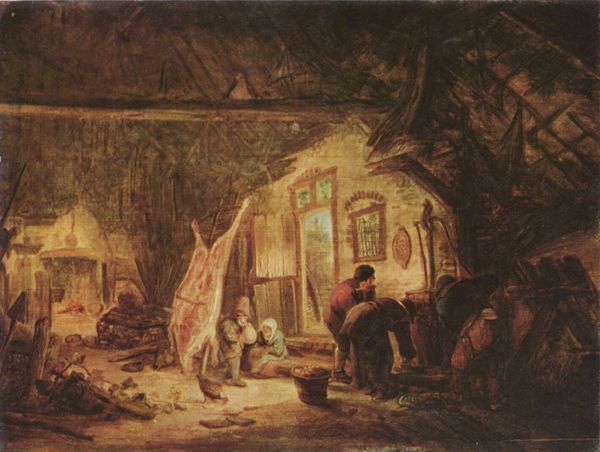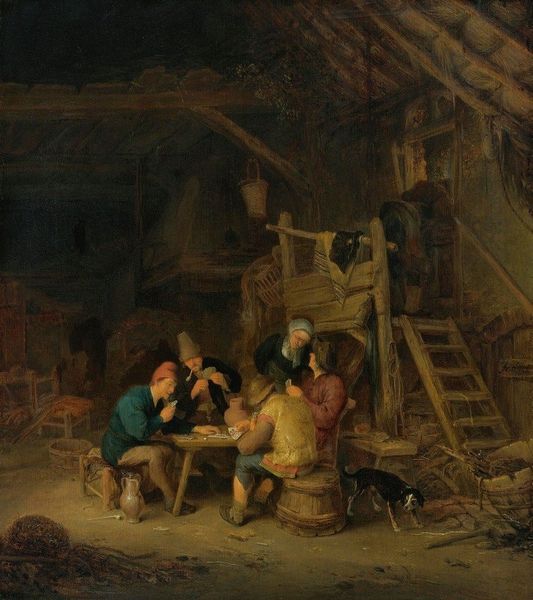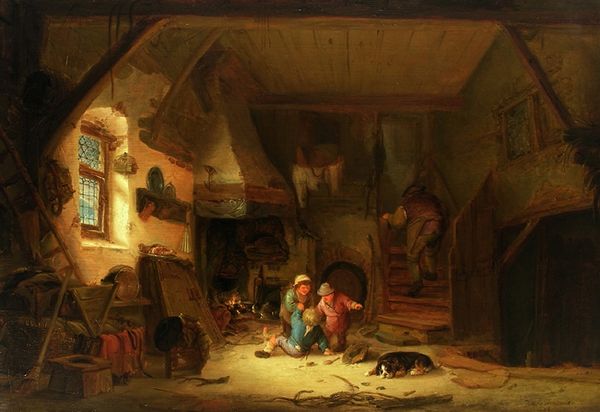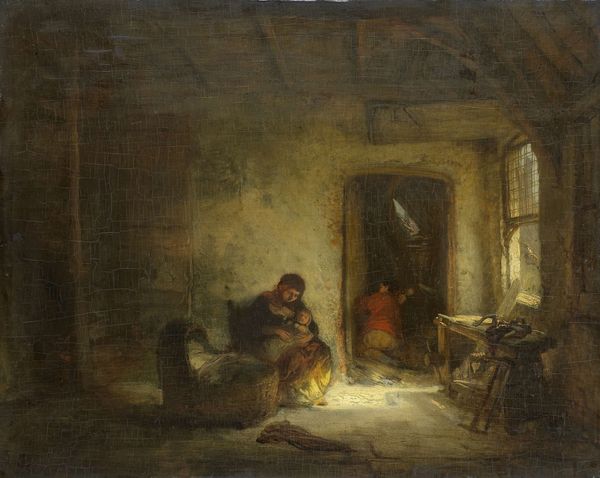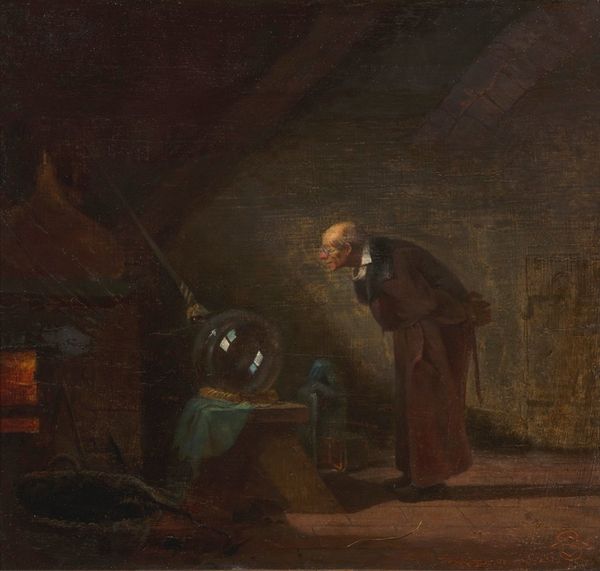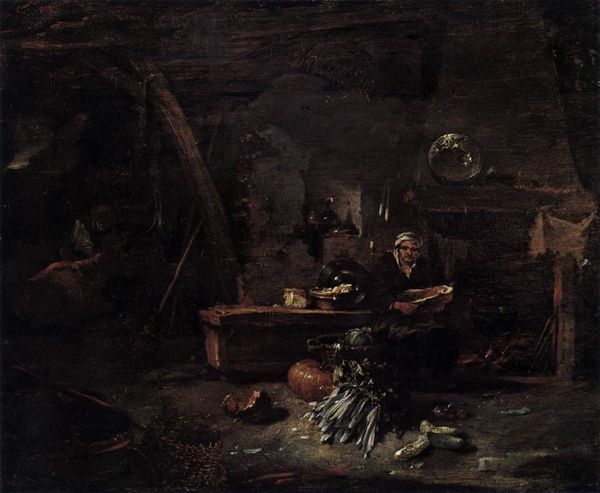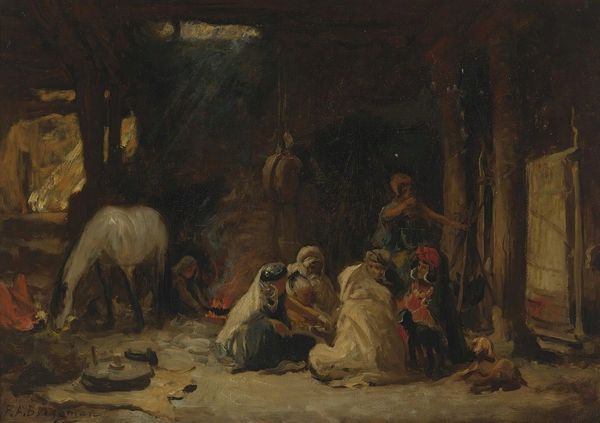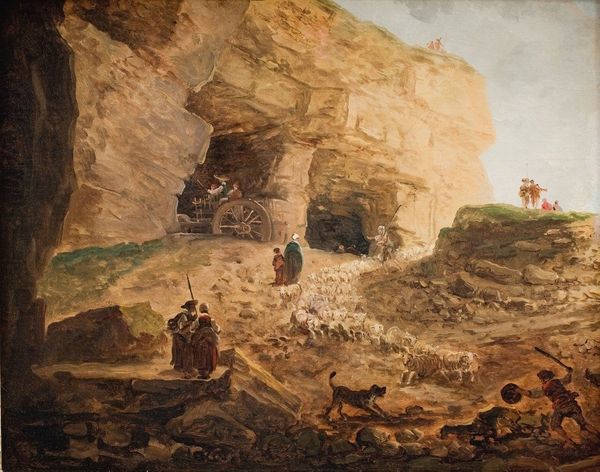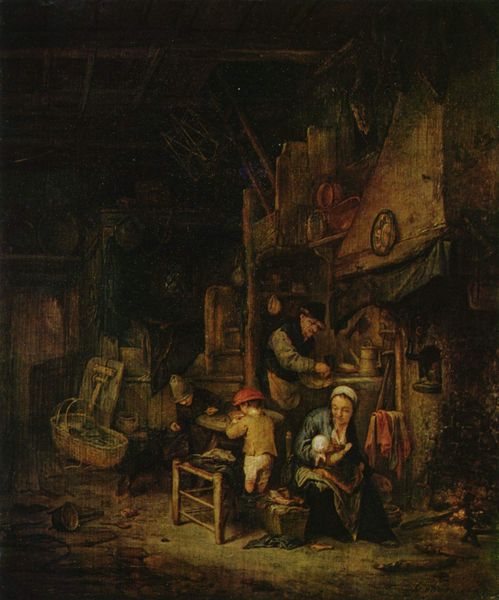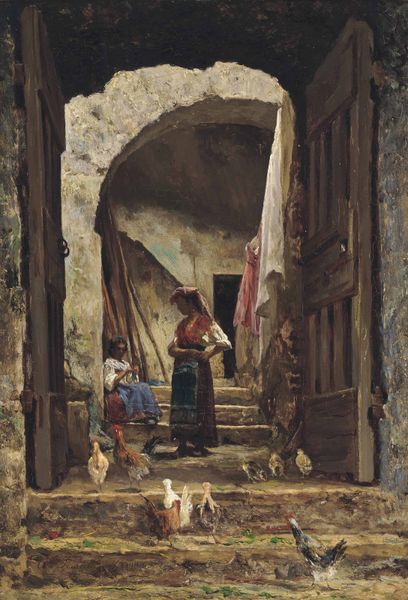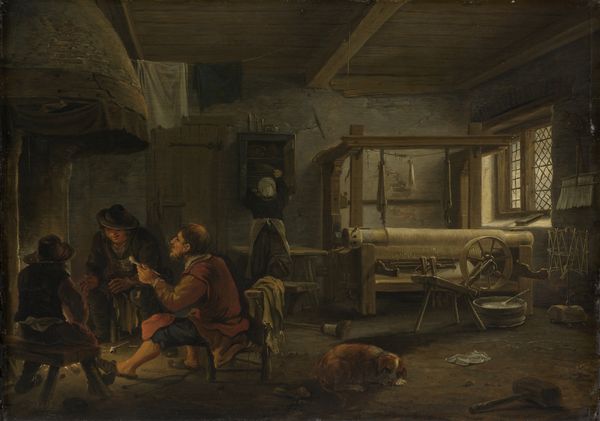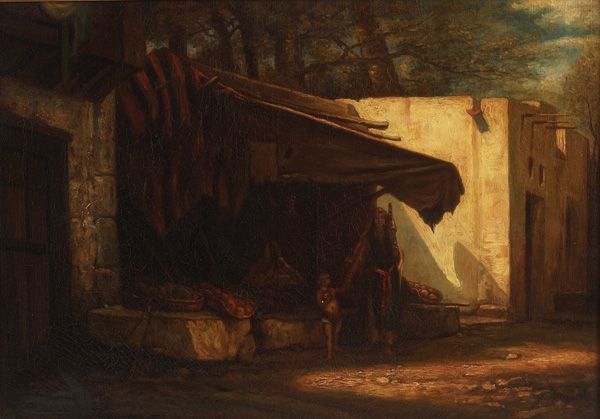
#
figurative
#
abandoned
#
possibly oil pastel
#
oil painting
#
derelict
#
earthy tone
#
underpainting
#
painting painterly
#
watercolor
#
warm toned green
#
environment sketch
Copyright: Public Domain: Artvee
Editor: So, here we have Hubert Robert's "A Family in a Cave Interior" from 1784. The painting on canvas depicts, well, exactly what the title says. There’s almost a theatrical quality to how the light falls inside the cave. How do you interpret this work? Curator: It's compelling to see Robert turning his attention to the means of survival within this constructed interior. The cave setting allows for an interesting interplay between the natural world and the human construction of a domestic space. What are the implications of situating this family within the very stuff of the earth? Editor: Hmm, it's like they’re making a home *out of* the earth… literally using what’s available. The makeshift furniture and hanging laundry really highlight the everyday aspects of their lives despite the unusual setting. Curator: Exactly! The raw materials—the cave itself, the roughly hewn wood, the textiles—become signifiers of labor and resourcefulness. This is not just about portraying a scene, but about calling attention to how resources are transformed into the necessities of life. Look closely – what kind of labor do you think has gone into their making? Editor: Well, clearly someone had to find and cut the wood for the furniture, and the clothes had to be spun and woven from some material. The hanging cloths seems so deliberate against the rough textures of the cave. Curator: Yes, this juxtaposition makes us question the boundaries we typically draw between high art and craft. It subtly elevates the ordinary work of making a home. Don't you think this material focus also encourages a dialogue around consumption and waste? Editor: That’s a great point. It's easy to miss that everyday aspect if you don’t really consider where things come from. Thanks, this gave me a fresh perspective. Curator: It's rewarding to consider art beyond the purely aesthetic and really think about its making, labor, and place in a larger socio-economic framework.
Comments
No comments
Be the first to comment and join the conversation on the ultimate creative platform.
